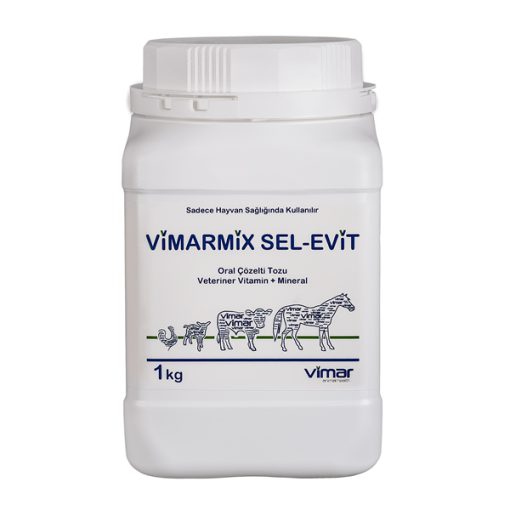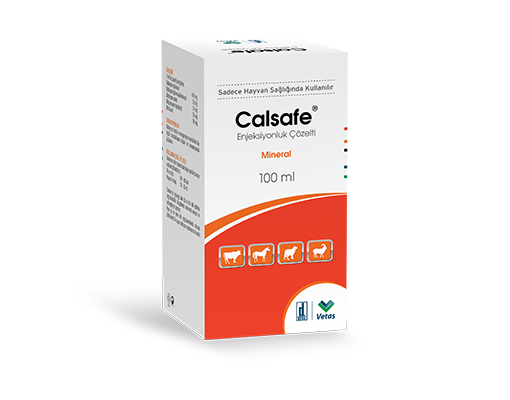Can Only Be Used In Animal Health
ATROPIN %0.2
Injectable Solution
Veterinary Anticholinergic
COMPONENTS
ATROPINE 0.2% Solution for Injection is a sterile, colorless, clear solution with a characteristic odor and contains 2 mg atropine sulfate as the active ingredient and 15.7 mg benzyl alcohol as a preservative in each ml.
PHARMACOLOGICAL PROPERTIES
Pharmacodynamic properties: Atropine is a tertiary amine alkaloid with peripheral and central antimuscarinic effects. It first stimulates and then depresses the central nervous system and has an antispasmodic effect on smooth muscles. It causes peripheral vasodilation, which increases blood pressure and has a mild respiratory stimulant effect. It suppresses the vagus and thus increases the heart rate. It is used to reduce bronchial secretion and salivation and as premedication in anesthesia by reducing vagal inhibition. It also suppresses gastric acid and pancreatic secretion. Its competitive antagonistic effect on acetylcholine in organs is dose dependent. Salivary and sweat glands are sensitive to low doses of atropine. The vagolytic effect on the heart occurs at high doses. The digestive system and urinary system are least sensitive to atropine. It is also used in the management or treatment of bradycardia and asystole. Atropine and other antimuscarinic drugs prevent the muscarinic side effects of anticholinesterases, which reverses the non-depolarizing effects of neuromuscular blocking agents. Atropine reduces tremor and muscle stiffness as in parkinsonism. It also has cyclopegic and mydriatic properties. It is used as a partial antidote in organic phosphorus poisoning.
Pharmacokinetic properties: It is absorbed rapidly after administration.. It spreads throughout the whole body. Its half-life is 2.5 hours. It is excreted partially unchanged in urine and is also excreted in milk.
AREA OF USE/INDICATIONS
It can be used in horse, cat and dogs. As a partial antidote in poisonings with anticholinesterase effects (such as phosphoric esters, carbamates, organic chlorines), As a pre-anesthetic to prevent bradycardia and bronchial secretion in general anesthesia, Spasmolytic in smooth muscles (smooth muscles such as digestive system, urinary system, uterus, bronchi, bile duct). It is used as a cardiac stimulant in cases of atrioventicular block or sinus bradycardia, as a bronchial secretion reducer and as a respiratory stimulant.
USAGE AND DOSAGE
According to the preference of the physcian, it is generally administred at a dose of 25-500 µg/kg body weight. Lower doses are used mostly for parasympatholytic effect and preanesthetic purposes, while upper doses are used in poisonings with anticholinesterase effects. In cases of atrio-ventricular block or sinus bradycardia, application can be made every 6-8 hours until improvement is achieved. It is used in anticholinesterase-effect poisonings as follows; Severe cases: A part (quarter) of the required dose is administered intramuscularly or slowly intravenously, and the remaining part is administered subcutaneously. Less severe cases: The entire dose is administered subcutaneously. Repeated doses may be required depending on the severity of poisoning. The application interval is generally 3-4 hours, but depends on the recurrence interval of severe or moderate symptoms. Atropine takes effect within minutes of application, and this maximum effect may be delayed up to 5-10 minutes after application.
SPECIFIC CLINICAL FACTS AND SPECIAL WARNINGS FOR TARGET SPECIES
It should be taken into consideration that hyperthermia may occur in situations where the environmental temperature is high. Animals administered atropine should be kept under clinical observation.
Use during pregnancy and lactation: Studies in animals have shown that it is teratogenic or has no effect on the reproductive system. However, since atropine can cross the placenta and the blood-breast barrier, it is not recommended for use in pregnant or lactating animals.
UNDESIRED EFFECTS
Atropin’s effects are dependent on the dosage. While the glands are sensitive to low doses, higher doses are required for the vagolytic effect on the heart muscle. Continuation of the anticholinergic effect may be observed during recovery from anesthesia. Effects such as dry mouth, mydriasis, constipation, accommodation disorder, tachycardia, vomiting, abdominal bloating, and urinary retention may occur.
DRUG INTERACTIONS
Atropine sulfate can be used with inhalation anesthetics, barbiturates, xylazine, ketamine and acepromazine. There is literature showing that the use of anticholinergics such as atropine together with alpha-2 receptor agonists such as medetomycin or xylazine for sedative or premedication purposes in dogs causes tachycardia and chronic hypertension. Atropine sulfate antagonizes the effect of metoclopramide. Quinidine, disopyramide, glutethimide, meperidine, procaine and procainamide increase the antimuscarinic effect of atropine. Anticholinergic drugs such as amantidine, some antihistamines, butyrophenones and phenothiazines increase the anticholinergic effect of atropine. Atropine increases the toxic effect of ranitidine. It should not be used together with acepromazine maleate, chlorpromazine HCl, heparin sodium, alkalis, tannic acid and silver salts.
SYMPTOMS, PRECAUTIONS AND ANTIDOTES IN OVERDOSE
In overdose, symptoms occur from a combination of the central and peripheral effects of atropinization. Early symptoms are characterized by excitation. Dry mouth, dysphagia, mydriasis, tachycardia, constipation, hyperpnea, muscle tremors and ataxia may occur. At high doses, stimulation is followed by depression, cardiovascular collapse, respiratory arrest, paralysis, and coma. Anticholinesterase drugs such as physostigmine can be used intravenously as an antidote at a dose of 0.1-0.6 mg/kg. Arousal can be alleviated with appropriate sedatives. Peripheral effects can be reduced by physiological antidotes such as pilocaspine. In the later stages of overdose or atropine poisoning, medullary stimulants or artificial respiration may be required.
RESIDUE WARNINGS IN ANIMALS WITH FOOD VALUE
It is not applied to animals with food value.
CONTRAINDICATIONS
It is not used in animals sensitive to atropine, where intestinal obstruction or jaundice are possible. It is not used in cases of glaucoma, paralytic ileus or pyloric stenosis. It is not used in patients with heart failure, hyperthyroidism, hyperthermia and arrhythmia.
GENERAL WARNINGS
Consult your veterinarian before use and if any unexpected effects occur. Keep out of reach of children.
PRECAUTIONS THAT NEED TO BE TAKEN BY THE PRACTITIONER AND WARNINGS FOR THE PHYSICIANS
The required precautions should be taken to avoid accidental self-injection. In case of injecting to humans, medical treatment should be applied immediately and the label and the prospectus of the product must be shown to the doctor. Wash your hands after use.
STORAGE CONDITIONS AND SHELF LIFE
Shelf life is 48 months from the date of production (36 months for 50 ml and 100 ml). Store below 25°C. Do not refrigerate or freeze. It should be used within 28 days at the latest after first use. The plug of the product can be pierced a maximum of 40 times.
WARNINGS FOR END OF USE DISPOSAL AND NON-TARGET SPECIES
Used or leftover product must be disposed of in accordance with relevant legislation.
TRADE DRESS
It is supplied in 20 ml, 50 ml and 100 ml Type II honey-coloured glass bottles in a cardboard box, closed with an aluminium-plastic white flip off cap and a red rubber plug.
SALES LOCATION AND CONDITIONS
Sold in pharmacies and veterinary offices with veterinary prescription (VHR)




